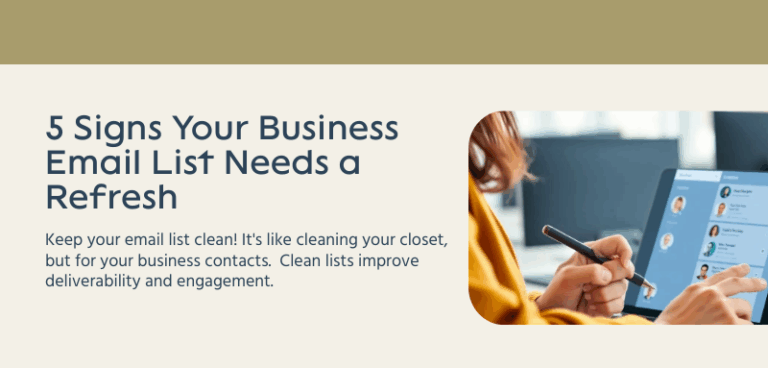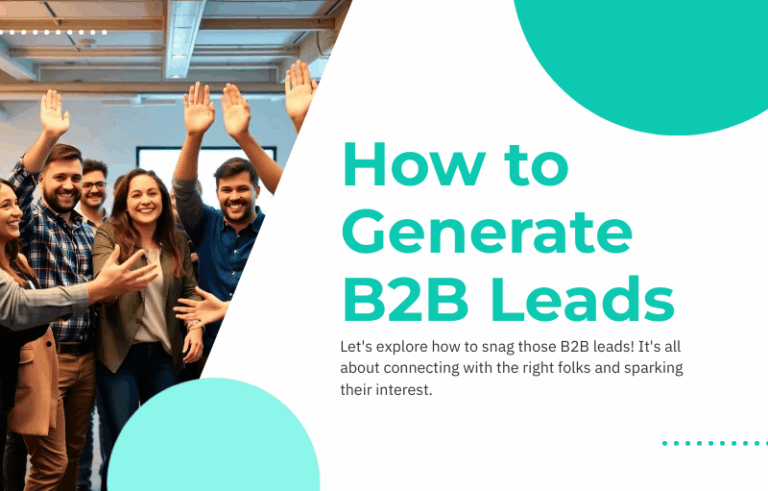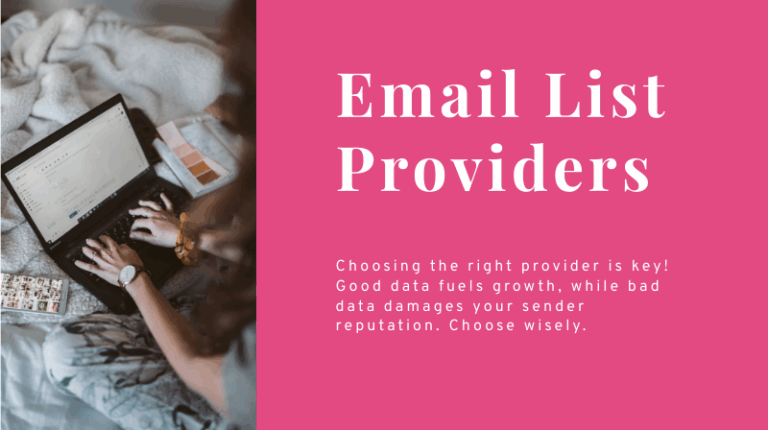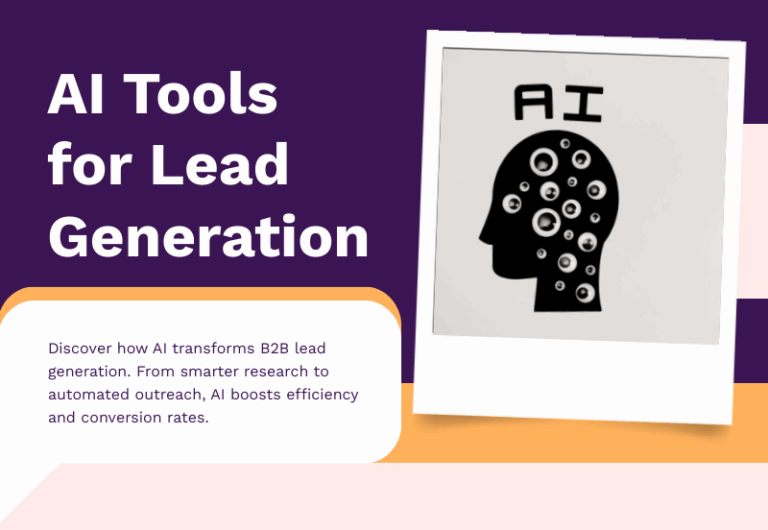
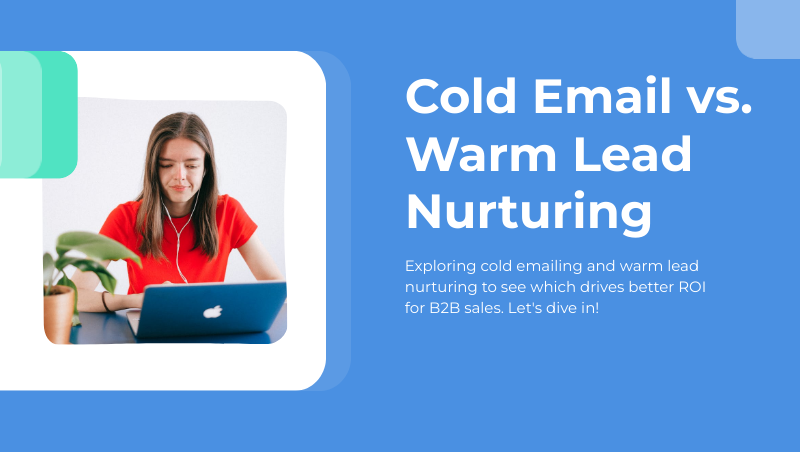
In the world of B2B sales, every dollar spent on outreach and lead conversion must be justified. Businesses operate on tight margins and long sales cycles, so efficiency in sales strategies can be the difference between stagnation and growth. Two strategies frequently debated by sales professionals are cold emailing and warm lead nurturing.
Cold emailing involves contacting potential prospects who have had no prior interaction with your brand. It’s outbound, often unsolicited, and requires a sharp value proposition to spark interest. Warm lead nurturing, by contrast, targets individuals or businesses who have shown prior interest—by signing up for a webinar, downloading a white paper, or visiting your pricing page multiple times.
Both strategies can be effective, but the question remains: Which one drives better ROI for B2B sales?
Understanding the Fundamentals
What Is Cold Emailing?
Cold emailing is an outbound sales tactic where a business sends unsolicited emails to potential clients or leads. These individuals may have been selected based on industry, job title, company size, or another qualifier, but they haven’t interacted with your brand before. The goal of a cold email is to introduce your company and spark interest that may lead to a meeting or sales conversation.
What Is Warm Lead Nurturing?
Warm lead nurturing is an inbound-focused process. It involves developing relationships with leads who have already shown interest in your product or service, typically by engaging with your content, submitting a form, or subscribing to an email list. These leads are not yet ready to buy but may become customers with the right education, follow-ups, and value-based communication.
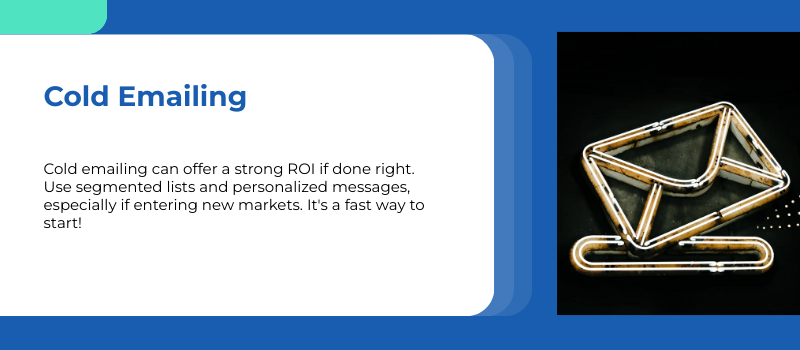
Cold Emailing: Pros, Cons, and ROI Considerations
Pros of Cold Emailing
- Scalability: Cold email campaigns can reach hundreds or thousands of new leads quickly with minimal incremental cost.
- Speed: You can generate meetings or sales opportunities quickly if your outreach hits the right audience.
- Target Expansion: You’re not limited to the audience currently in your funnel. Cold outreach enables penetration into new verticals or industries.
- Lower Front-End Investment: Cold emailing doesn’t require extensive content production or ad spend.
Cons of Cold Emailing
- Low Response Rates: The average cold email response rate hovers around 1-5%. It requires high volume to see traction.
- Deliverability Risks: Poorly written or high-volume cold emails can lead to spam flags and domain reputation damage.
- Less Personalization: With mass outreach, tailoring every message becomes time-consuming and costly.
- Compliance Concerns: Regulations like GDPR and CAN-SPAM can restrict cold outreach if not properly managed.
Cold Email ROI Potential
The ROI of cold emailing can be strong—if executed properly. High-performing campaigns use segmented lists, personalized messaging, and robust follow-up sequences. For startups or companies entering new markets, cold emailing is often the fastest way to validate a value proposition and generate early leads. However, the cost per acquisition can be high if not optimized, and sales cycles tend to be longer due to initial trust-building.
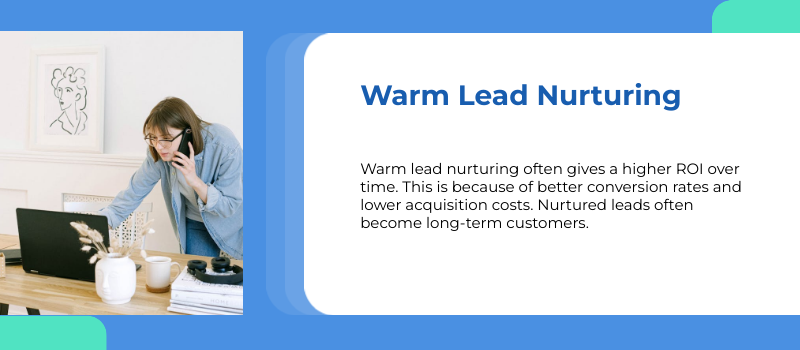
Warm Lead Nurturing: Pros, Cons, and ROI Considerations
Pros of Warm Lead Nurturing
- Higher Conversion Rates: Warm leads are already interested in your offering, making them more likely to convert with the right message.
- Relationship-Based Selling: This strategy allows time to build trust and credibility through helpful content and personalized follow-ups.
- Better Data for Personalization: Since warm leads have interacted with your brand, you can tailor communications based on their behavior and interests.
- Shorter Sales Cycles: Leads already engaged are typically further along in the buyer journey.
Cons of Warm Lead Nurturing
- Resource Intensive: Requires content creation, marketing automation tools, and a coordinated sales-marketing alignment.
- Smaller Reach: You’re limited to the leads already in your funnel unless you also invest in demand generation.
- Long-Term Focus: It may take weeks or months before a nurtured lead is ready to make a purchase.
- Dependence on Funnel Volume: If your lead generation efforts slow down, your warm lead pool shrinks.
Warm Lead Nurturing ROI Potential
Warm lead nurturing often delivers a higher ROI over time due to stronger conversion rates and lower cost per acquisition. Nurtured leads are more likely to become long-term customers, leading to higher lifetime value. The downside is that nurturing requires a longer runway to set up the infrastructure (email sequences, lead scoring, behavioral tracking) and deliver results.
Cold Email vs. Warm Lead Nurturing: Side-by-Side Comparison
| Metric | Cold Emailing | Warm Lead Nurturing |
| Response Rate | 1–5% (on average) | 10–30% (depending on engagement) |
| Conversion Rate | Low initially, improves with segmentation | Higher due to existing interest |
| Speed to Launch | Fast (days) | Moderate to slow (weeks/months to build content and automation) |
| Cost per Lead | Low upfront, higher over time if conversions are weak | Higher upfront investment, but lower per acquisition in the long run |
| Sales Cycle Length | Longer, due to need for education and trust-building | Shorter, since leads are already aware |
| Scalability | High, but limited by list quality and spam risk | Moderate, reliant on funnel growth |
| Personalization | Limited unless tools are used | High, based on known lead behaviors |
| Best Use Case | New market penetration, early-stage pipeline building | Funnel conversion, relationship building, up-sells |
Strategic Scenarios: When to Use Each
When Cold Emailing Makes Sense
- You’re entering a new market and need to build a pipeline from scratch.
- You have a clearly defined Ideal Customer Profile (ICP) and access to quality contact data.
- You have limited inbound traffic and need to create opportunities proactively.
- You’re testing a new offer or product, and speed of feedback is more important than conversion rate.
When Warm Lead Nurturing Is Ideal
- You have consistent inbound traffic or webinar signups, and want to convert those into paying customers.
- You’re in a long sales cycle industry (e.g., software, enterprise solutions) that relies heavily on trust.
- Your marketing team has built strong content assets, like guides, email sequences, or case studies.
- You’re optimizing for long-term customer value, not just quick wins.
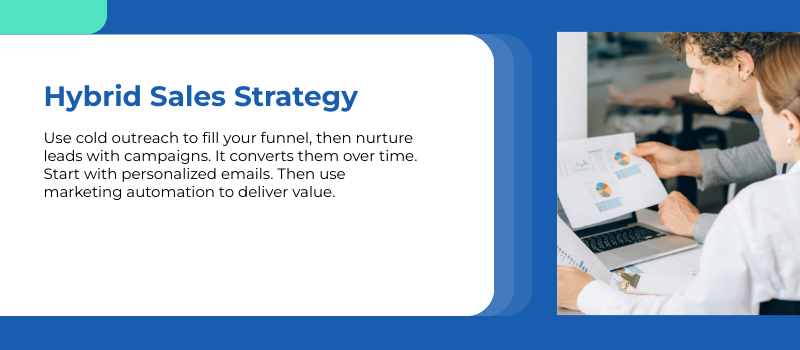
Combining Cold and Warm: A Hybrid Sales Strategy
The best B2B organizations rarely choose one method exclusively. A hybrid strategy allows you to fill the funnel with cold outreach and convert those leads with nurturing campaigns over time. Here’s how a blended strategy might look:
Step 1: Cold Outreach to Spark Awareness
Start with a well-researched cold email campaign targeting your ICP. Use personalized subject lines and a clear value proposition in your messaging. The goal isn’t necessarily to close a deal on the first email—it’s to earn engagement.
Step 2: Convert Responses into Warm Leads
Once a lead replies, books a meeting, or clicks through a CTA, move them into a lead nurturing track. At this point, they’re no longer cold. Use marketing automation to deliver helpful resources, schedule follow-ups, and track their behavior on your website.
Step 3: Retarget and Reinforce
For those who engage but don’t convert, use retargeting ads, email drip campaigns, and occasional check-ins to stay top of mind. If you’re collecting firmographic and behavioral data, you can create segmented workflows that push them toward a buying decision at the right time.
Step 4: Reactivate Cold Leads Later
Some leads who didn’t respond to your initial cold outreach may be valuable in the future. Store them in your CRM and re-engage quarterly with updated messaging, new product releases, or relevant case studies.
Sales and Marketing Alignment: The Hidden ROI Multiplier
No matter which strategy you choose, ROI often hinges on the alignment between sales and marketing. Sales must provide feedback on lead quality and pipeline performance, while marketing needs to create assets that support both outreach and nurturing.
This includes:
- Shared KPIs (e.g., SQLs, revenue attribution)
- Service-Level Agreements (SLAs) to ensure timely follow-ups
- Lead Scoring Models to prioritize outreach
- Regular Syncs and Strategy Reviews
With clear communication and accountability, companies can maximize the ROI of both cold outreach and warm nurturing strategies.
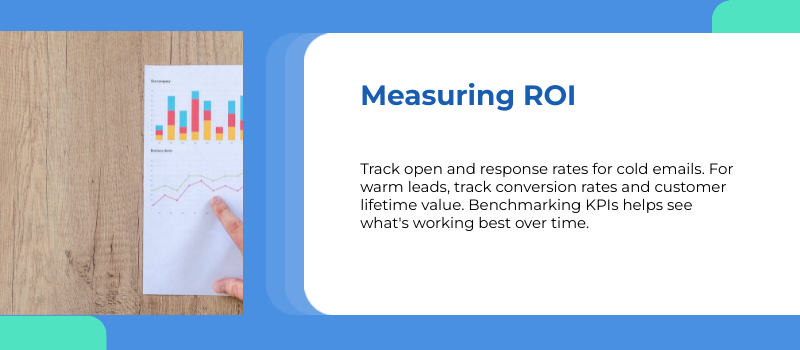
Measuring ROI: What to Track for Each Strategy
Cold Email Metrics
- Open Rate
- Response Rate
- Meeting Booked Rate
- Opportunity Creation Rate
- Cost per Opportunity
- Spam Complaint Rate
- Domain Reputation
Warm Lead Nurturing Metrics
- Email Click-Through Rate
- Lead-to-MQL Conversion Rate
- MQL-to-SQL Conversion Rate
- Average Sales Cycle Length
- Customer Lifetime Value (CLV)
- Content Engagement
- Pipeline Velocity
By benchmarking these KPIs over time, you can identify which strategy or campaign types are delivering better returns.
Which Strategy Delivers Better ROI?
It depends on your business stage, resources, and goals.
- For startups and companies entering new markets, cold emailing is a quick way to generate pipeline and validate a niche.
- For established businesses with inbound traffic and a content library, warm lead nurturing delivers a better conversion rate and stronger customer loyalty.
- For high-ticket B2B sales, a hybrid strategy that uses cold email to source leads and nurturing to convert them often drives the highest ROI.
The most important takeaway: ROI isn’t just about tactic—it’s about execution. Whether cold or warm, the effectiveness of your approach hinges on data, targeting, timing, and the quality of your messaging.
Key Takeaways
- Cold emailing offers fast outreach at scale but requires personalization and follow-up to be effective.
- Warm lead nurturing builds stronger relationships and higher conversion rates, but demands time, content, and system investment.
- Combining both allows businesses to expand reach and deepen engagement.
- ROI improves when sales and marketing work in sync with shared metrics and feedback loops.
Whether you’re sending your first cold email or refining a nurturing sequence, keep your focus on what matters: building trust, delivering value, and helping prospects solve real problems. That’s the true path to ROI in B2B sales.
